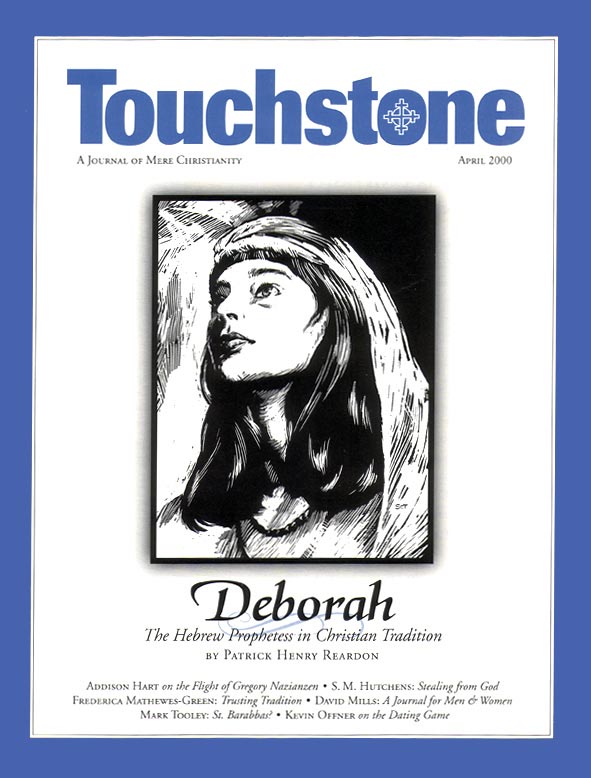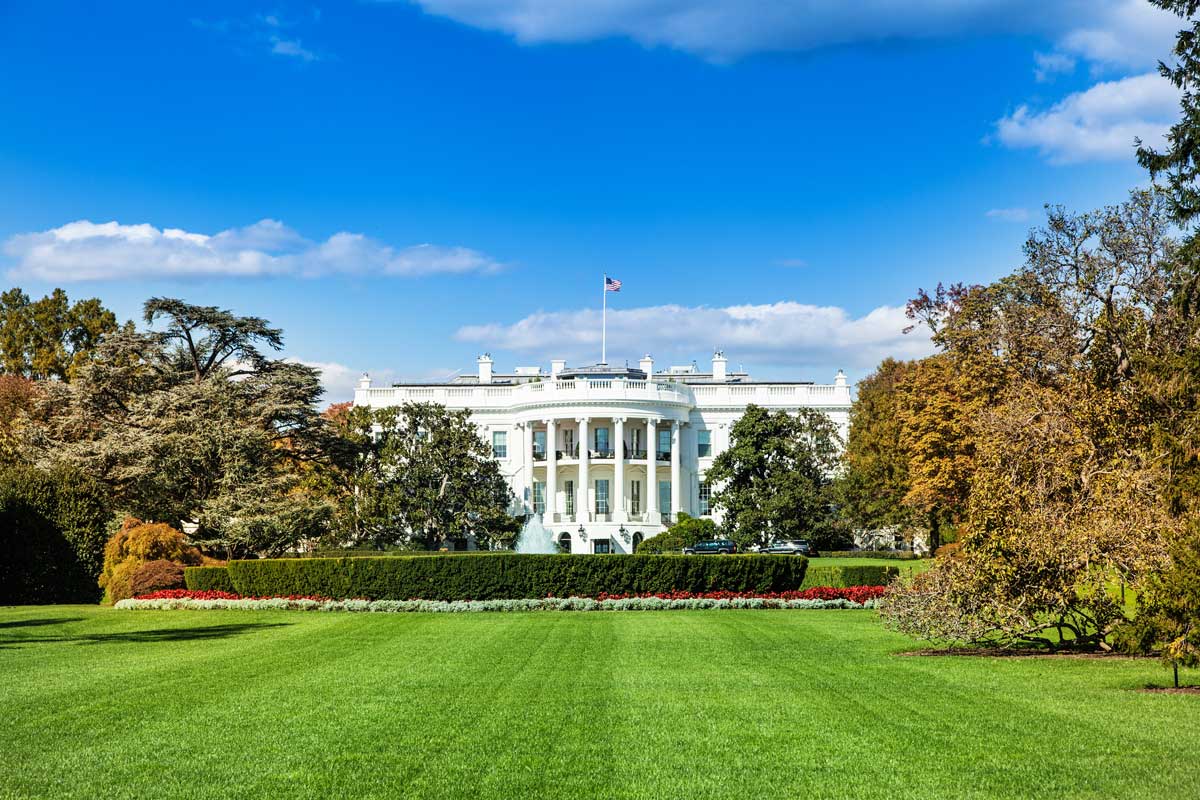St. Barabbas?
The New Martyrs of the Religious Left
by Mark Tooley
President Clinton’s clemency for sixteen imprisoned Puerto Rican terrorists last year ignited a political brouhaha. Both Houses of Congress overwhelmingly denounced any early release for the Puerto Rican separatists. A Justice Department report later acknowledged that their release would hamper deterrence against domestic terrorism.
Although largely unreported by the media, the inmates have been a cause célèbre for the Religious Left for some time, as has been Leonard Peltier, an American Indian activist serving time for his murder of two FBI agents.
The same church activists who advocated the amnesty for the Puerto Rican terrorists are now focusing their energies on Peltier’s freedom. Of course, the Religious Left has not and will not gain success on its own. Its alliances with secular left-wing advocacy groups were crucial for the release of the Puerto Ricans and will be crucial for Peltier’s amnesty. But church involvement was crucial for lending a moral legitimacy and fervor to both causes.
Just Like Peter & Paul?
Five years ago I attended a directors’ meeting of the United Methodist Board of Church and Society, the largest church lobby in Washington, D.C. During the final minutes the directors unanimously approved a resolution calling for the immediate release of sixteen Puerto Rican “political prisoners.” The resolution likened the prisoners to Nelson Mandela, America’s Founding Fathers, the Apostles Peter and Paul, and even Jesus.
“We see in Scripture how some of our greatest spiritual heroes spent time in jail for political reasons,” the resolution intoned, as it noted that “colonialism” (of the sort the United States supposedly practices in Puerto Rico) is a “crime,” as defined by the United Nations.
The sixteen inmates were Puerto Rican separatists whose groups had plotted and perpetrated several years of murderous bombings, robbery, kidnapping, and other mayhem during the late 1970s and early 1980s. Most had served with the Armed Forces for National Liberation (Spanish acronym: FALN), while several were affiliated with the Macheteros (the Machete Wielders). One of the prisoners had been on the FBI’s “ten most wanted” list during the 1970s. They received sentences of up to 90 years for their crimes.
In 1996 the governing General Conference of the 8.5-million-member United Methodist Church, again without debate, approved a resolution demanding release for the terrorists. The National Council of Churches (NCC), ostensibly representing over 30 denominations and 55 million American church members, followed suit. And an ad in the New York Times appealing for the prisoners’ freedom was signed by dozens of mainline Protestant and Catholic church leaders, including bishops and presiding officers of denominations.
The sixteen inmates have claimed they are prisoners of war incarcerated for advocating a “free and socialist” Puerto Rico that is independent of the United States. The FALN, of which most of the prisoners were a part, was involved in 130 bomb attacks from 1974 to 1983 that killed six people, including a six-year-old, and injured 130 others, mostly in Chicago and New York. The Machete Wielders, to which the remainder of the prisoners belonged, masterminded a $7.1-million Wells Fargo robbery in Connecticut in 1983.
Remorseless “Living Saints”
Prior to the clemency offer, most of the prisoners showed no remorse for their years of terrorism. “I have no regrets for serving a noble cause,” Oscar Lopez Rivera told a reporter from his federal prison cell in Marion, Illinois. He is one of the two who have refused the clemency, which required the prisoners to reject future acts of violence. “Would we be willing to renounce the struggle for Puerto Rico’s independence to get out of jail? I will never do that.”
Although supporters of the prisoners tout democracy, no plebiscite in Puerto Rico has ever shown more than a tiny fraction of the electorate favoring independence from the United States. The Puerto Rican Independence Party typically gets five percent of the vote, and direct plebiscites on separatism have garnered even fewer votes.
The church leaders who have defended the prisoners not only endorse the ideological aspirations of the prisoners, but also described the inmates virtually as living saints. The NCC, when endorsing an amnesty for the inmates, hailed their “profoundly impressive moral character” and “spiritual depth.” Then NCC General Secretary Joan Campbell even visited the White House to lobby for a full amnesty.
Numerous religious leaders visited the terrorists in prison and emerged talking as though they had visited a holy shrine. “I found myself very moved. They are . . . of great character and are . . . in the midst of very difficult circumstances, holding fast to their own sense of who they are and who they want to be,” enthused the Reverend Paul Sherry, former president of the 1.4-million-member United Church of Christ.
“Meeting [them] was a profound honor,” recalled Sammy Toineeta, a racial justice official with the NCC. “Their dedication, their serenity, their compassion, their commitment, and their humility—along with their inner and outer beauty—combine to make them exactly what they say they are not: role models.”
None of the religious groups, as a precondition for release, ever demanded any repentance from the terrorists, who in their eyes have nothing for which to repent.
The Newest “Scapegoat”
Like that of the Puerto Rican prisoners, the case of Leonard Peltier dates back well into the cold war, when the old Soviet Union insisted that the imprisoned Indian activist was a political prisoner. He was serving time for the murder of two FBI agents. The Soviet Union can no longer defend Peltier, but the usual list of religious and secular left-wing activists, with help from a slew of Hollywood celebrities, continues to see Peltier as a political prisoner who was framed by the FBI.
Peltier was convicted in 1977 for the 1975 shooting of two FBI agents on the Pine Ridge Indian Reservation in South Dakota. He does not deny shooting at them. But despite an initial confession of guilt, he has for over 20 years insisted that somebody else delivered the final coup de grace to the wounded officers. They were shot execution-style while lying prostrate on the ground after a shoot-out with possibly dozens of American Indian Movement (AIM) militants.
Last November, the Free Leonard Peltier Committee rallied in the nation’s capital. Using the United Methodist Building on Capitol Hill as their headquarters, they demonstrated in front of the White House and lobbied congressional officers on behalf of their imprisoned hero. Religious groups like the NCC and the United Methodist Board of Church and Society have joined the campaign. These crusaders see Peltier as one of the most recent victims of US misdeeds against Native Americans.
“He was a scapegoat used by a system seeking to ‘settle up’ or even the score against vocal Native Americans,” explained Thom White Wolf Fassett, general secretary of the United Methodist Board of Church and Society. With some special entree to the White House because of Hillary Clinton’s United Methodist affiliation, Fassett has spoken to both President Clinton and Attorney General Janet Reno about an amnesty for Peltier.
FBI Director Louis Freeh disagrees and, most unusually, has publicly opposed any possibility of clemency for Peltier. “Leonard Peltier was convicted of a grave crime,” he said in 1994, “and there should be no commutation of his two consecutive terms of life in prison.”
The Crime
In 1975 the two murdered FBI agents, 28-year-old Jack Coler and 27-year-old Ronald Williams, followed a van carrying several men with rifles onto a ranch where Peltier was residing. The van stopped and its passengers came out shooting. The agents were trapped by their car in an open field. Armed only with service revolvers and one shotgun, they got off only five shots and were nearly defenseless against long-range rifles. Their car was shot at least 125 times.
After shooting only once, Coler’s arm was nearly severed by return fire. Williams, already shot in his side, attempted to apply a tourniquet to his colleague. Coler was unconscious and Williams, realizing that further resistance was futile, apparently attempted to surrender. They both were executed instead. Williams held up his hand in front of his executioner’s gun before the bullet smashed into his face. Coler was then shot in the head and throat.
Dozens of Peltier’s militant colleagues may have been present at the ranch and participated in the gunfight. An FBI rescue party killed one and captured another, but Peltier and the rest escaped. Later, an Oregon state trooper stopped a vehicle that Peltier was driving. Peltier responded with gunfire and escaped into the woods. He left behind in his vehicle Agent Coler’s revolver with Peltier’s thumbprint on it, along with eight other guns, a collection of hand grenades, and 350 pounds of dynamite.
Peltier later escaped to Canada, where he was captured by the Royal Canadian Mounted Police in 1976. After a lengthy appeals process, he was extradited to the United States to face trial. He admitted to Canadian police that he thought the FBI had been pursuing him to serve a warrant for his arrest in the 1972 attempted shooting of a Milwaukee police officer.
During Peltier’s 1977 trial, the prosecution produced three witnesses who said they saw Peltier walk towards the wounded FBI agents with an AR-15 rifle moments before the fatal shots. A jury in Fargo, North Dakota, took ten hours to convict Peltier on two counts of murder, for which he would be legally guilty even if he had not shot the actual bullets that killed the FBI agents. He was given two consecutive life sentences.
Defending the “Martyr”
A 1983 book called In the Spirit of Crazy Horse argued that a vast conspiracy involving the FBI, judges, prosecutors, coroners, and Canadian Mounties had contrived to frame Peltier because he threatened white corporate America. The book was later withdrawn from circulation for several years in the face of libel suits. But it helped spark the Free Peltier movement. (And Oliver Stone has purchased the film rights to the book.)
Peltier’s defenders portray him as a significant American Indian Movement leader, but Peltier was only a “bodyguard” for AIM. He performed “security” for AIM when its leaders ransacked the Bureau of Indian Affairs in 1972. The defenders also ignore Peltier’s long history of violence. He was implicated, but not convicted, in the attempted murder of a Milwaukee policeman in 1972, for which he jumped bail. And in 1973 he was linked to shootings at two policemen at the Pine Ridge Reservation in North Dakota. He also jumped bail on an illegal weapons charge in Washington State.
Peltier himself has never expressed any regrets. “I was there that day,” he says of the murders for which he was convicted. “I’ve never denied that. But we were attacked, and we had a right to defend ourselves, and so I fired back.” He sees himself as a martyr and gladly accepts the mythology that has grown up around him. He signs his signature “In the Spirit of Crazy Horse.”
The FBI Agents Association suggests that Peltier’s victims and their families are the rightful recipients of sympathy, rather than Peltier. This suggestion has gone unheeded by pro-Peltier church groups. Last summer the NCC endorsed an initiative to gain parole for Peltier. The NCC’s General Assembly formally endorsed a call for Peltier’s release in 1997.
The NCC and the United Methodist Board of Church and Society have in their statements either declined to describe the facts relating to Peltier’s crimes or glossed over them. A United Methodist news release of last year, for example, repeats the canard that the US Government framed Peltier as part of a campaign to gain mining rights in tribal lands.
The release misleadingly states that the FBI’s confrontation with Peltier was precipitated by the FBI’s search for the thief of some “used cowboy boots.” (The FBI was actually searching for a suspect involved in robbery and torture.) “Tensions” led to a gunfight that resulted in two FBI fatalities and one Native American fatality, according to the release, as though the ambush by Peltier’s hoodlums of two isolated FBI agents was little more than a gang brawl.
Perhaps President Clinton will not risk further political controversy by offering one more questionable amnesty, this time to Peltier. But if he or his successor does free Peltier, it will be largely thanks to persistent church groups, who apparently think that even robbery, terrorism, and murder are acceptable tools of resistance.
Mark Tooley directs the United Methodist committee of the Institute on Religion and Democracy (www.ird-renew.org) in Washington, D.C.
bulk subscriptions
Order Touchstone subscriptions in bulk and save $10 per sub! Each subscription includes 6 issues of Touchstone plus full online access to touchstonemag.com—including archives, videos, and pdf downloads of recent issues for only $29.95 each! Great for churches or study groups.
Transactions will be processed on a secure server.
more on martyrdom from the online archives
more from the online archives
calling all readers
Please Donate
"There are magazines worth reading but few worth saving . . . Touchstone is just such a magazine."
—Alice von Hildebrand
"Here we do not concede one square millimeter of territory to falsehood, folly, contemporary sentimentality, or fashion. We speak the truth, and let God be our judge. . . . Touchstone is the one committedly Christian conservative journal."
—Anthony Esolen, Touchstone senior editor










